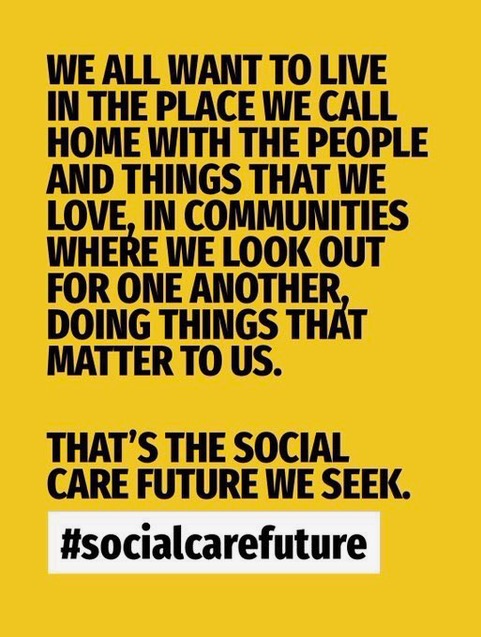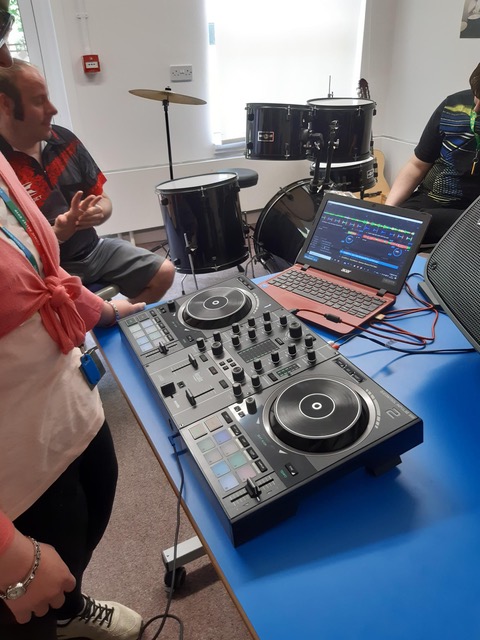
In Canada, in the mid 1970’s, a young and brilliant graduate York University lecturer and the founder of the Centre for Special Services for Handicapped Students was dying of apathetic bureaucracy. This woman, Judith Snow, had been placed in a geriatric ward of a residential care home, as she is quadriplegic, and because the state had judged that there was no other suitable place for her. Going to work everyday meant that she would have to get up earlier and go to bed later than some of the other residents. The home decided that Judith was being awkward, and refused to help her eat at any other time than those scheduled. So she decided to carry on working and slowly starve to death1.
Fortunately around this time, another woman, Marsha Forest, met Judith and the two became firm friends along with Marsha’s husband, Jack Pearpoint. These two friends would arguably save her life and also change it forever. By what they describe as an organic process, Jack and Marsha started to help Judith campaign for an independent life where she could be in control of appointing her own aid workers and allocating her own budget. Along with other friends, Jack and Marsha became Judith’s circle of support and though no one realised it at the time, they had stumbled on to something rather special. Judith called her circle the Joshua Committee as reference to the biblical Joshua who led the Israelites to the Promised Land and who helped them defend themselves from tyrants. One can imagine only too well that Judith had bureaucrats and archaic policies in mind when naming her Joshua Committee, as she witnessed them pushing forward to gain ground in the field of health and social care for disabled people. Together they helped to inform policy on budgetary allowances for vulnerable people, raise awareness of the need for ‘inclusion’ and collaborated with others to write books and papers about ‘giftedness’. Giftedness is the concept that everyone has a gift to give, something to give back to society, no matter how big or small. Additionally and very importantly, with the help of her circle, Judith became the first person in Canada to receive government mandated individualised funding for personal assistance, setting a precedent for other disabled people receiving state funded care.
Members of the Joshua committee went on to develop tools based around the ideas of ‘inclusion’ and ‘giftedness’ that became the genesis for person-centred approaches. MAP, developed by Judith Snow, John O’Brien and Jack Pearpoint, was first designed as a tool for helping disabled children integrate into mainstream schools, but is now also used widely with children and adults. PATH, developed by Marsha Forest, Jack Pearpoint and John O’Brien in 1991, was designed to help people move on from a problem, and aid in creating short and long-term goals.
The seeds of change had been planted and a model of person-centred planning had been born through the organic process of Judith’s circle and through co-production of person-centred tools. Person Centred Planning is a way of assisting people to work out what they want; the support they require to get it and then helping them get it. Planning will always have the person at the centre, is always carried out alongside friends and family and has played a particularly important role in delivering objectives in the UK’s “Valuing People Now”2 document. , As a result, person-centred approaches came to the forefront of health and social care agendas but the question was also asked, could Judith’s circle be replicated? Would circles work for anybody else? Could circles be engineered so that any person who felt they needed support has the opportunity to have their own? What would this process look like?
So in the 1990’s, Owen Cooper invited John O’Brien to the UK to help facilitate a meeting of people in circles, who shared their stories and experience of supporting people in an effort to understand what it would take to be an engineer support groups like Judith’s. Unfortunately, even in 2014, circles are still not widely used, even though they have been shown to be effective in many ways. In Canada, circles of support have been put into place helping to support sex offenders after incarceration. Research has since shown a 71% reduction in re-offending in those offenders that are part of a circle compared to those that are not 3. The concept has now moved to some states in the USA and to the UK4. In 2009, research showed that circles of support in the UK can assist people in using personal budgets and, and can demonstrate co-production in practice5. More recent research from the London School of Economics, has indicated that supporting people within circles to manage their personal budget at home is financially more cost-effective than that person staying in full-time residential care6.
Currently, there are two prominent charities working to facilitate circles of support for absolutely anyone who feels they might need one, not just people with a diagnosis. These are Circles Network based in the Midlands, and Community Circles based in the North West of England. As a part of Community Circles, I am proud and able to say that our circles are slowly increasing, reaching out and touching people’s lives. To tackle any potential difficulty in setting up circles, we are passionately dedicated to finding the most robust and simple processes for the generation and maintenance of new groups. For an insight into one of our up and running circles, read Cath’s blog about Mary’s cream cake get together. One of our current projects is working in partnership with Bruce Lodge, a residential home for older people with dementia and other mental impairments, so that we can help people maintain a place in their community. We hope to achieve big things for individuals, although those things may look small to the outsider. Judith Snow wanted to eat when she wanted, she wanted to be able to go to work, to get married, to have friends and a nice home. These aren’t big things to everyone but they can be the building blocks of a happy life, and a circle helped Judith to achieve them.
By Heather Cartledge
1: Pearpoint, J. (1998) From Behind The Piano. Inclusion Press: Toronto
2: Valuing People Now (2010) Department of Health.
https://www.gov.uk/government/uploads/system/uploads/attachment_data/file/215891/dh_122387.pdf
3: Wilson RJ, Cortoni F, McWhinnie AJ. (2009) Circles of Support & Accountability: a Canadian national replication of outcome findings. Sex Abuse. Dec; 21(4): 412-30
4: See: http://www.yhcosa.org.uk; http://www.lucyfaithfull.org.uk/circles_of_support.htm
5: Needham, C and Carr, S. (2009) Co-proåduction: an emerging evidence base for adult social care transformation. London: SCIE
6: Perkins, M., Wistow, G., Knapp, M. and Bauer, A. (2014) Personalisation and Circles of Support: exploring the economic case. PSSRU






